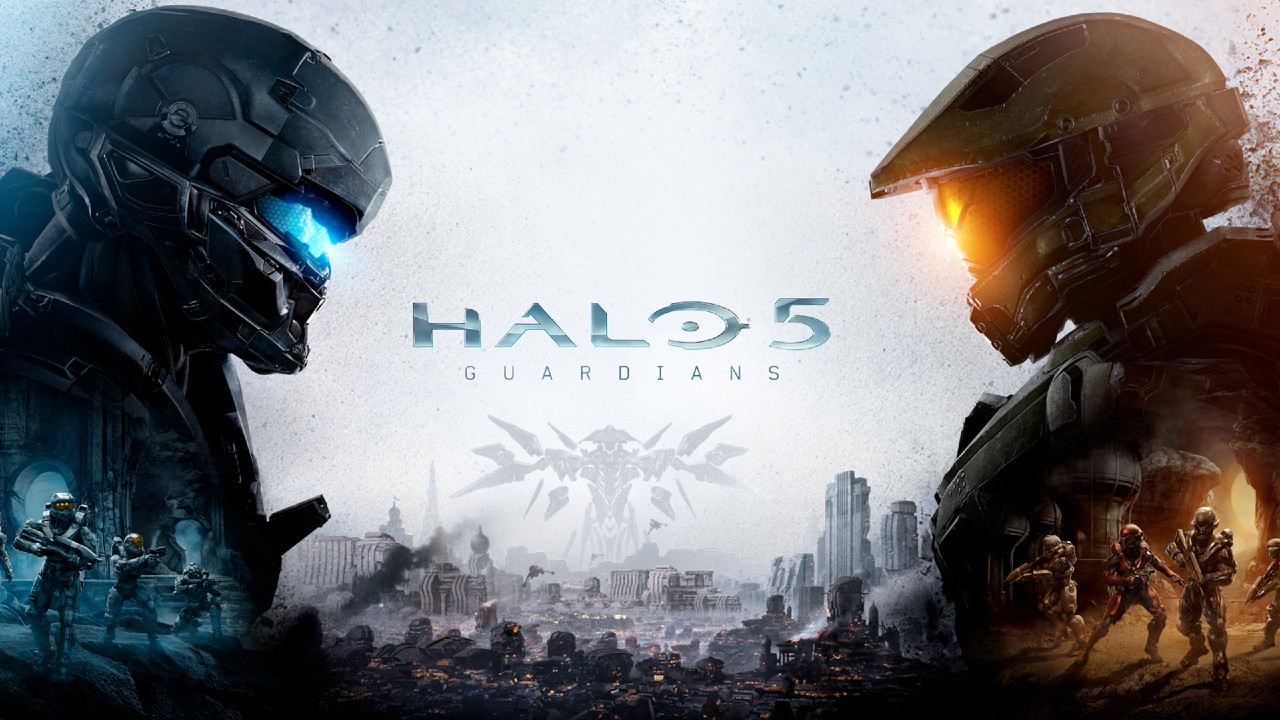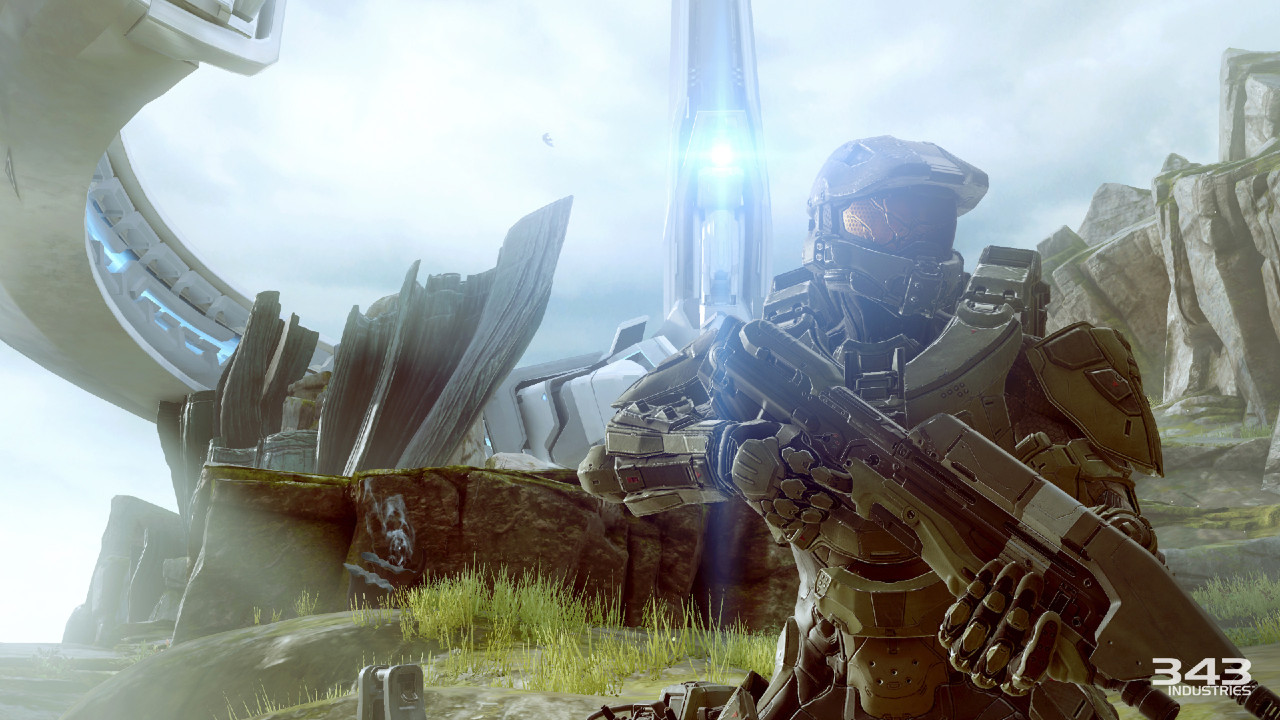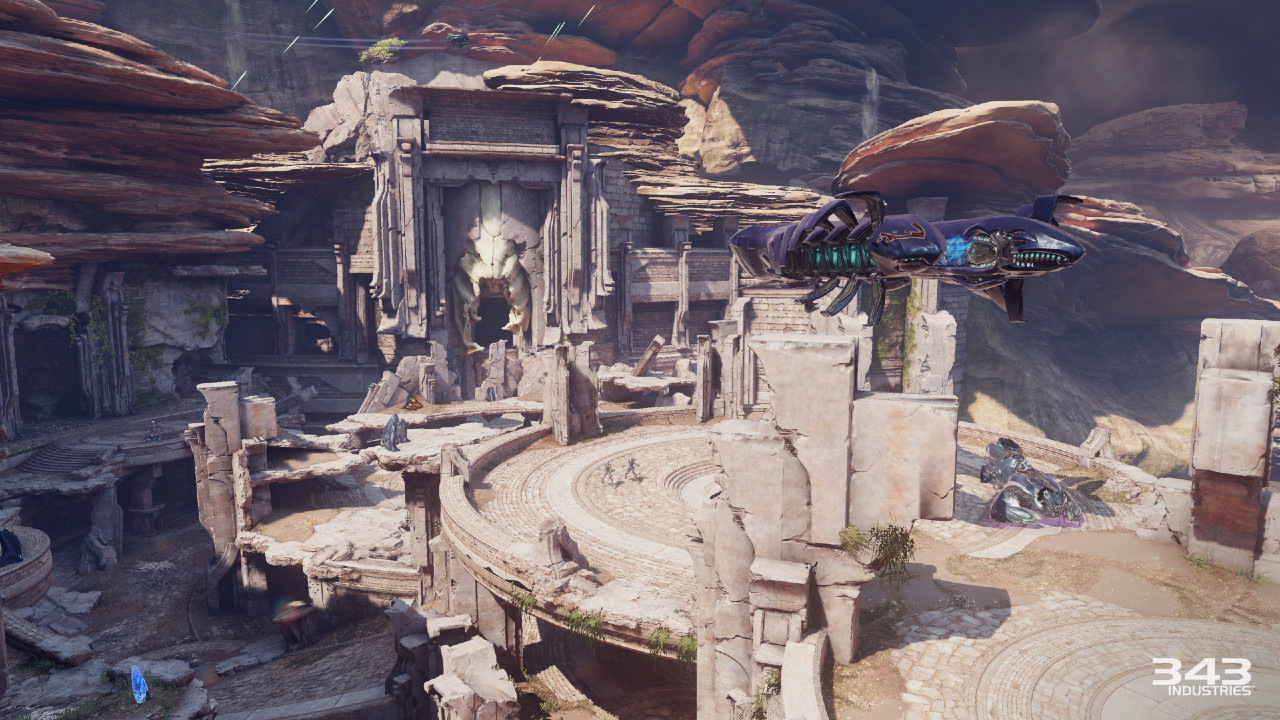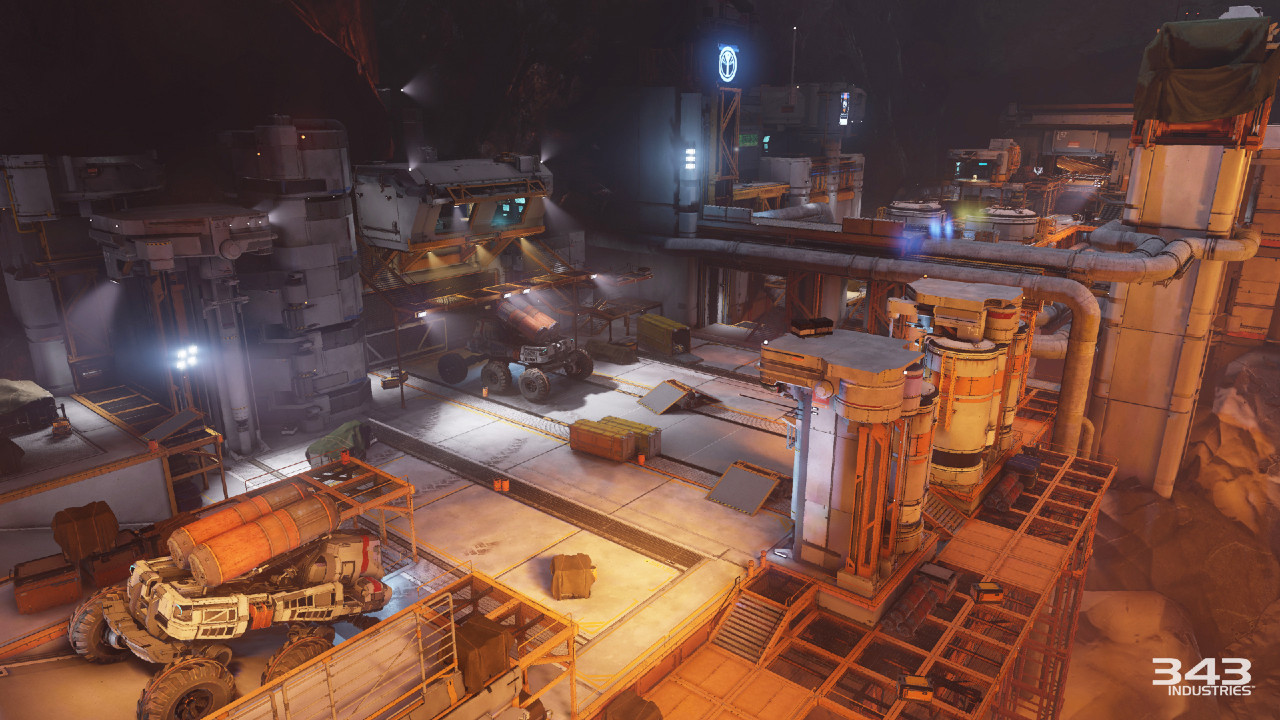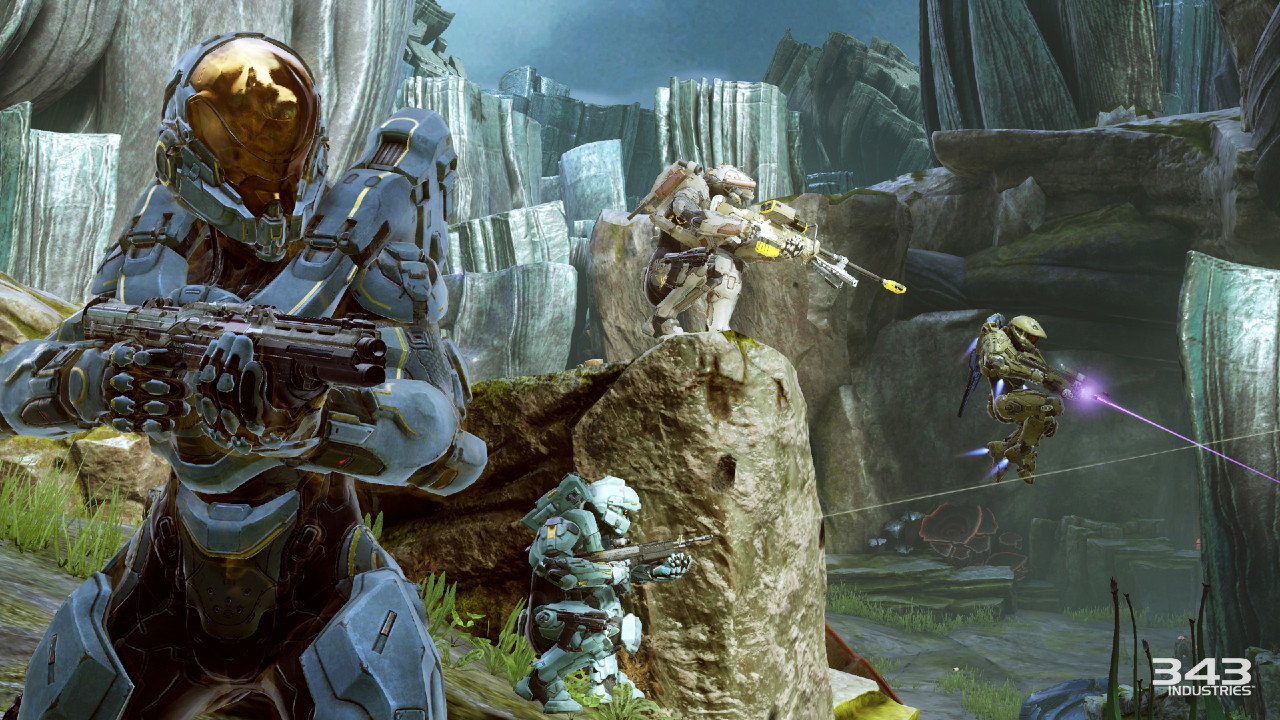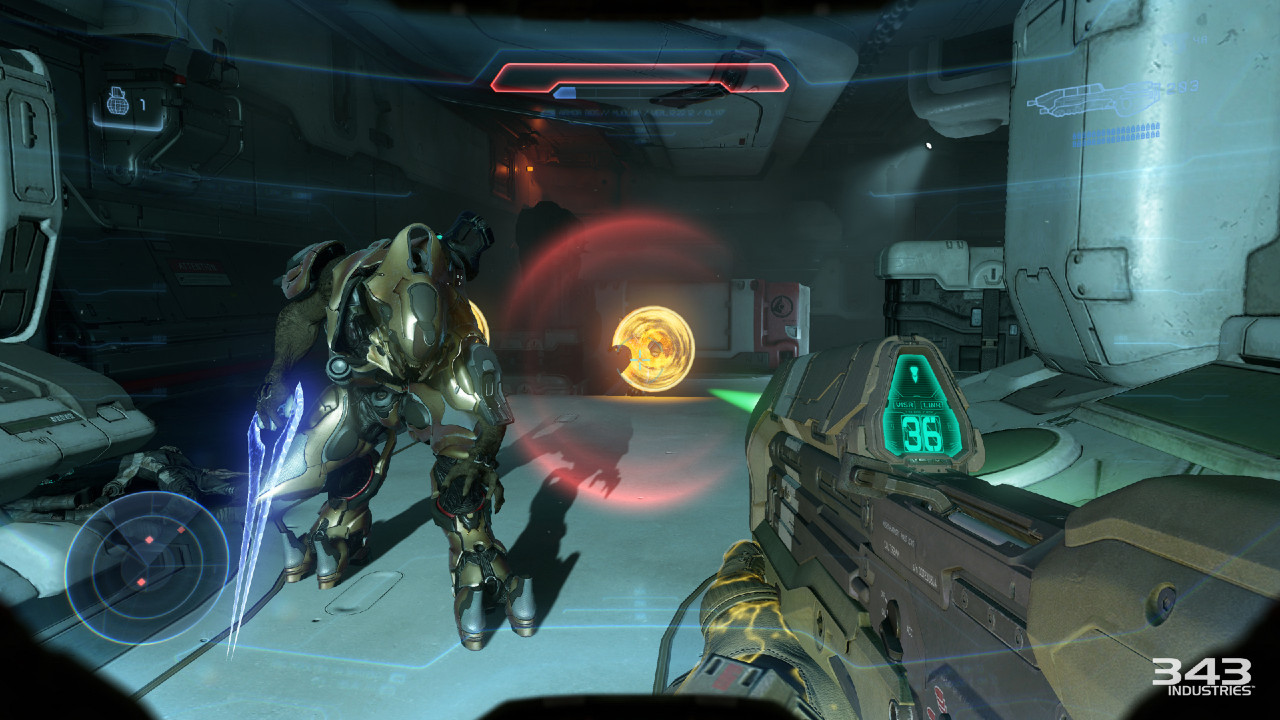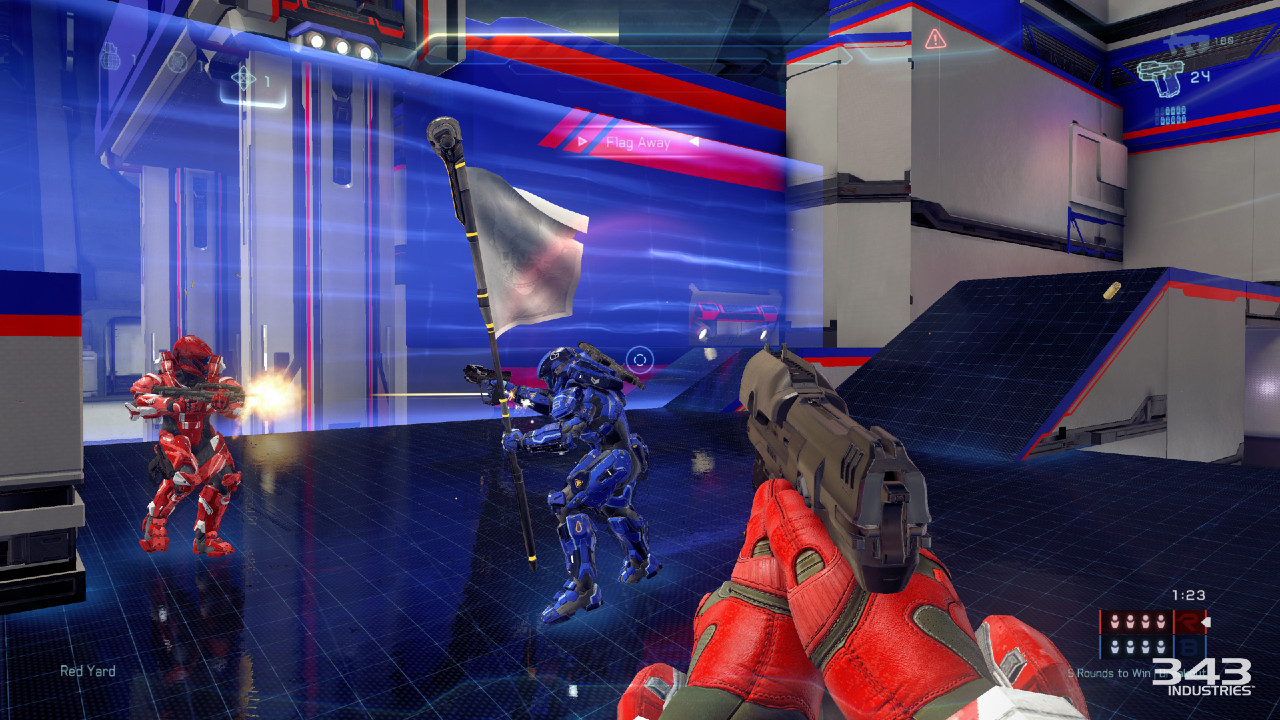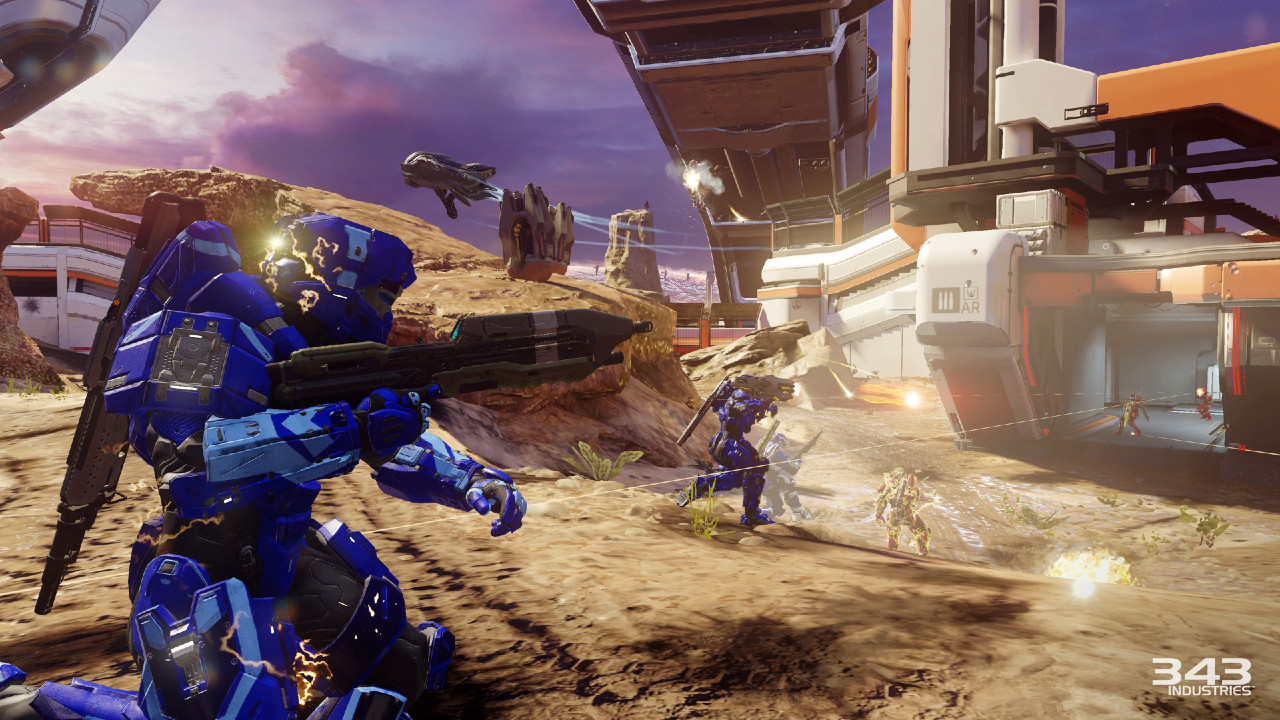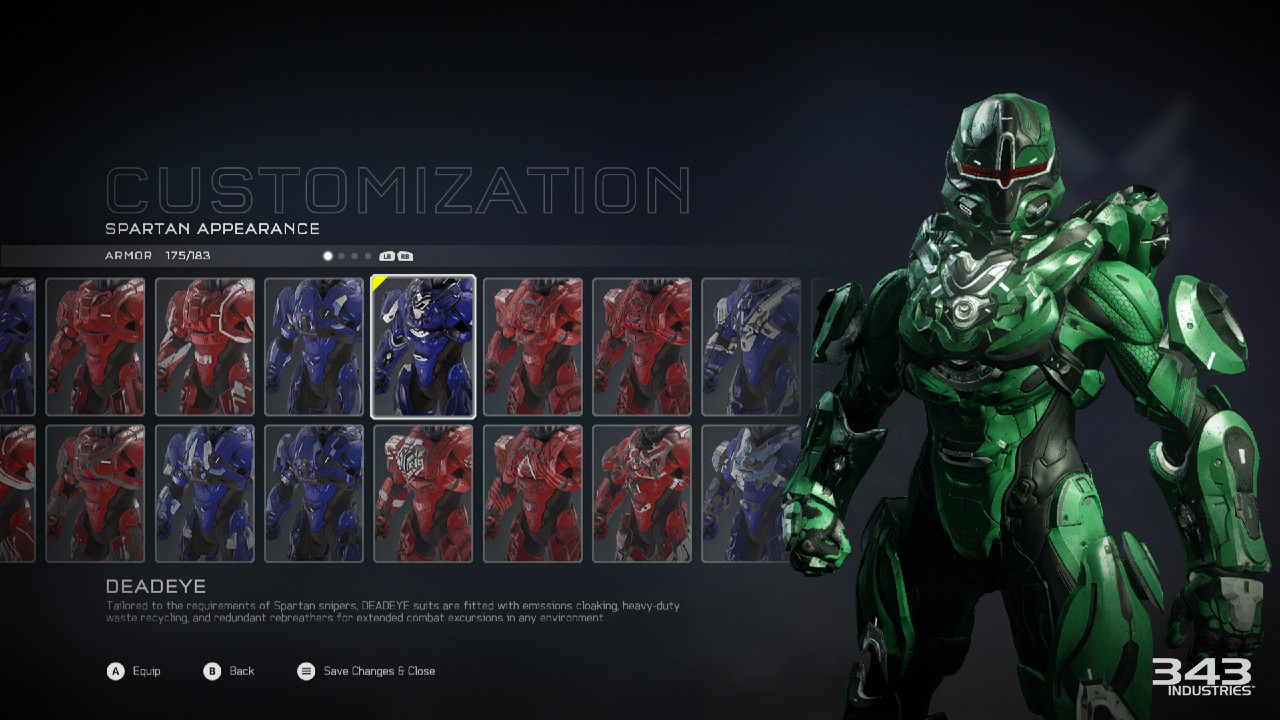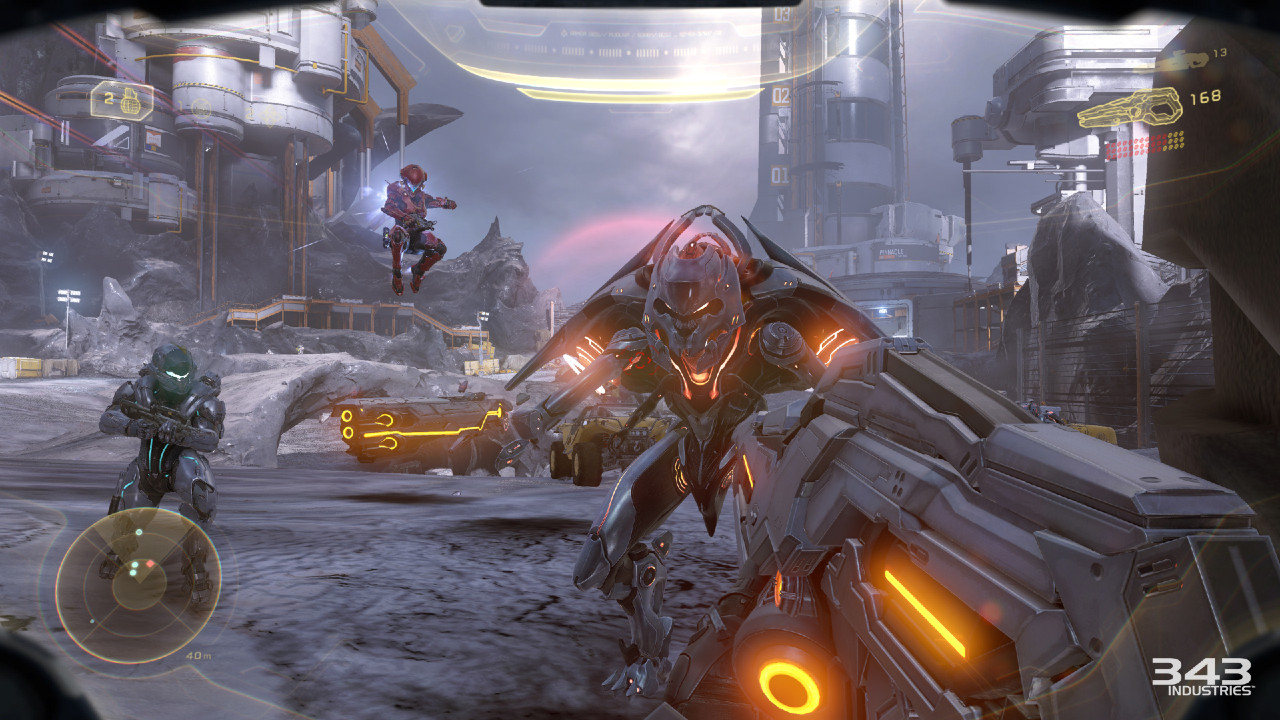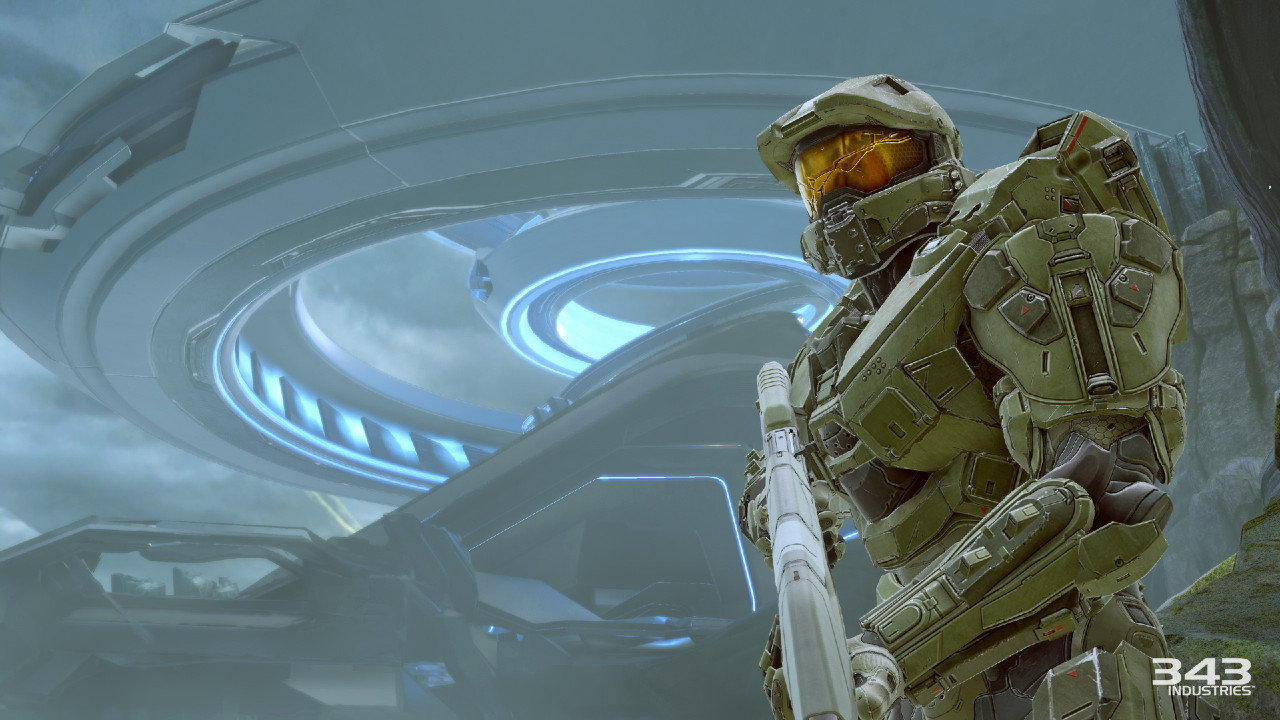Title – Halo 5: Guardians
Platforms – Xbox One
Release Date – October 27th, 2015
Developer – 343 Industries
Publisher – Microsoft
MSRP – $59.99
ESRB – M for Mature
Disclaimer – This product is being reviewed on the Xbox One. A review copy was provided by Microsoft for the purpose of this review. This review may also contain spoilers for certain gameplay and story elements. Watch at your own risk, you have been warned. Gaming Instincts is an Amazon Affiliate and does gain financial benefits if you choose to purchase this product on this page.
Introduction
Halo 5: Guardians finally returns on Xbox One. Master Chief and Spartan Locke are ready to take on the Covenant and Prometheans. Ever since the launch of the original Xbox and Halo: Combat Evolved, the franchise has done great things when it comes to the FPS genre. Halo was always known for having fantastic gun play, good pacing, iconic characters, and developed story line, among other things. The saga has been running for 14 years now, which is a long time for an FPS franchise. Halo 5: Guardians has been heavily anticipated by many Master Chief and FPS fans for over the last two years, ever since its announcement at E3 2013.
Story
The story continues right after the events of Halo 4. Fans who are obsessed with the story of Master Chief will not be disappointed. Halo’s lore was always complex and intriguing thanks to the great characters and their unique stories. Players will come across many plot twists, entertaining blockbuster cinematics, great voice acting, and they will be kept on the edge of their seat from beginning to end due to the sublime pacing.
Gamers will be visiting different places with many interesting lore elements. For example, one mission takes place on a planet called Sangehelios. Sanghelios is the homeworld of the Elite race. Sword of Sanghelios is most entertaining missions, with its beautiful rocky desert theme and it being the Elites’ place of origin. It’s also worth noting that in every mission, players can now collect Intel data. There are a total of 117 Intel scattered across the game. Intel can usually be found in hidden places, high platforms, dead bodies, or consoles. Once gamers pick up an Intel, it will start playing an audio log from whoever was able to record it. Intel gives players many interesting bits of background information.
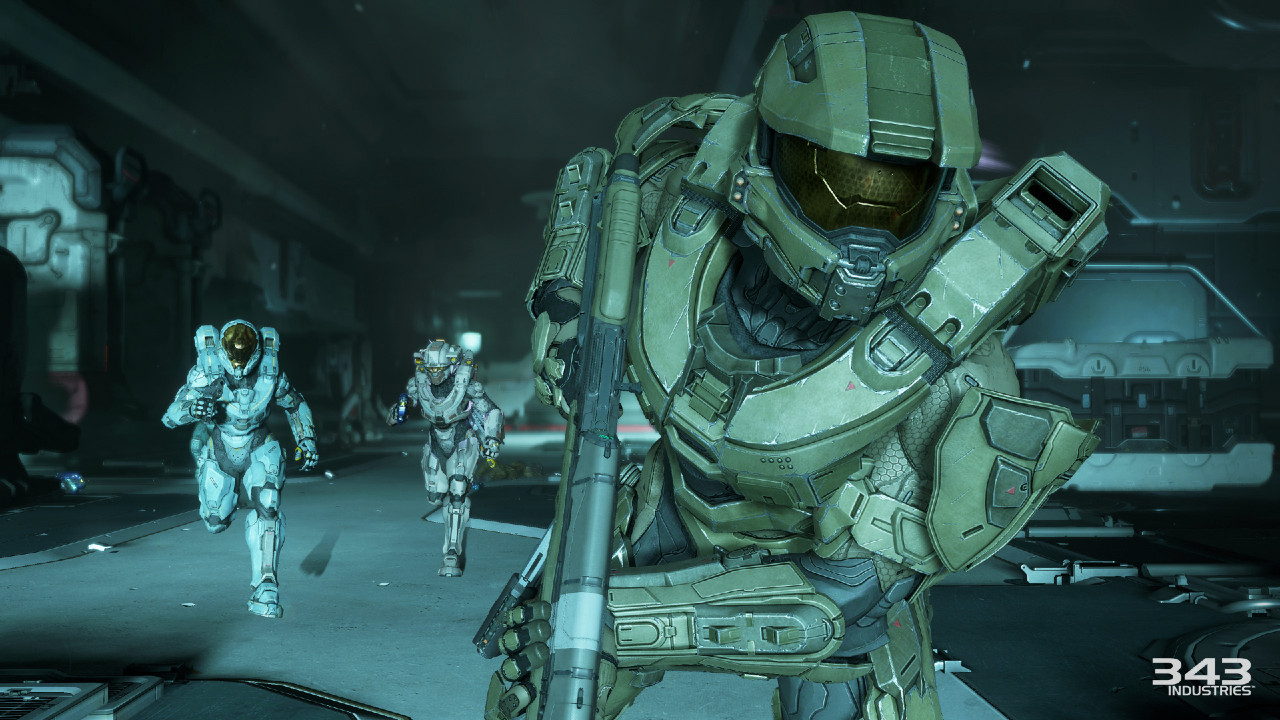
The end of the game will open up plenty of new questions that won’t be answered until the next entry, but fans will acquire some answers before the story ends. It’s also highly recommend players beat this game on the Legendary difficulty for the bonus ending after the credits roll. The bonus ending is short but worth seeing. The direction in which 343 Industries is taking the story is bold and risky. Fans should love it, though, some will have mixed feelings about it or possibly even hate it. Overall, 343 Industries succeeded at making major plot changes that create more room for storytelling in the future and some of the lore can get fascinating down the road.
Gameplay and Level Design
A big concern in modern FPS games is level design. In the past, it was always about collecting keycards and moving from corridor to corridor, killing baddies Duke Nukem and DOOM style. Today, it’s more about story progression, immersive worlds, and open spaces. Halo 5: Guardians continues to keep the franchise’s gameplay fans always loved. It stays true to traditional FPS style. Halo 5 continues this tradition, however; it does it in a much bigger and more open environment.
The most significant change in Halo 5: Guardians regarding level design is the “verticality” and exploration aspects. Levels are much broader and take longer to explore, and there are multiple ways gamers can go about their objective. One objective in Sword of Sanghelios is to enter a temple. Players can find breakable walls to find a side path to flank their enemy. Spartans can also try going to the bottom of the level instead of the top or vice versa. Trying out different tactics allows users to better analyze the battlefield. It’s one of the best things that can happen to this franchise. A bigger level size that’s not there just for space, but as a sandbox gamers can use to their advantage to figure out the best way to approach the mission, create more immersion, and provide more opportunities for fun gameplay elements. These open-ended levels also make the traversal easy and engaging. Players can climb to the highest point of the level to snipe enemies or use their thrusters to boost themselves from one platform to another to avoid enemy fire or escape.
This new level design approach goes well with the 4-player co-op 343 Industries has been pushing in Halo 5: Guardians. Having four players in these open spaces can be a real blast, because players can communicate with their team to create some exciting firefights and ambushes to tackle the next objective. Allies can drive a Warthog while players use the Scorpion tank to demolish enemies, and someone else can drive a Mongoose and run grunts over. Situations like these create new opportunities for fun and dynamic gameplay that haven’t been implemented in the Halo franchise previously. Teams can decide which person uses the sniper rifle while someone else is entering through the side entry and using a Fuel Rod to kill Hunters or Golden Elites.
Having 4-player co-op through the game becomes a lot easier than other Halo titles, especially on Legendary difficulty due to teammates being able to revive each other infinitely; unless they get killed by a Wraith, fall off the edge of the level, or get disintegrated by the Promethean grenades and weapons. This mechanic’s addition by 343 Industries is understandable, as having a full team of elite Spartans to resurrect each other makes sense. However, those who wanted to be challenged might not find it as enjoyable or as hardcore as previous Halo games, despite the fact the game gets harder the more players a team has. If gamers want a tougher challenge, they can play Solo on Legendary, as AI teammates can also pick players up.
However, the AI’s utility is inconsistent. If players die on a ledge or some platform, the AI will just stand there and watch fans die, even though they’re nearby. The AI will also remain passive, not attack anything unless players issue them commands using the D-pad; a situation like this can be both good and bad because gamers can just use them as their revive machines by having them stand in one place, where they don’t get hit. That said, that tactic has a drawback, because they’re not distracting the enemy or taking shots for fans depending on the fight. It’s understandable that the game was built for co-op, but that doesn’t mean the AI should be at this level of inconsistency, and it felt like the AI was a mere afterthought.
Halo 5: Guardians spans across 15 missions. However, a few of them are not actual missions, but short stops where Spartans are in a small hub where all they have to do is talk to an important NPC to continue to the next mission, or players can explore and look for the Intel to get achievements. It breaks the game’s pace a bit. Overall, it’s not going to make or break the game, but someone might be upset the game goes over 13 missions that have full gameplay as opposed to 15. As for the missions themselves, they usually consist of defending an area, assaulting a base, going inside a building and killing sets of enemy waves to proceed to the next room, driving iconic vehicles, and more. Nothing revolutionary as far as objectives, it’s the open-ended levels that make the missions themselves more fun.
Spartan abilities also make it more engaging. Being able to sprint at full speed and charge into a hunter or a grunt to knock them off a cliff is satisfying. Overall, the gameplay is solid. Most importantly, Halo 5: Guardians is a huge improvement over Halo 4; the open-ended levels are a great treat for everyone.
Multiplayer and REQ Systems
Halo 5: Guardians shines when it comes to multiplayer. Arena mode consists of traditional playlists such as Capture the Flag, Slayer, Strongholds, SWAT, etc. Halo 5: Guardians also features a new playlist called Breakout. Players in Breakout are going straight into 4v4 combat as soon as they spawn on a symmetrically mirrored arena map. Spartans have two ways of winning: capturing a flag that’s in the middle and bringing it to the enemy base, or eliminating all four enemy team members. The map is tiny, and the action starts literally about 5-10 seconds after players spawn. To achieve victory, teams need to win five rounds, allowing the possibility of clutch moments. It’s a lot of fun when both teams are of equal skill; it creates a lot of competitive tensions. It’s clear Microsoft and 343 Industries are pushing this into the eSports scene, because Breakout is tailored exactly to that style of play.
The other new, large-scale mode is called Warzone. There are two types of the 24 player Warzone playlists; Assault Warzone and regular Warzone. In Assault Warzone, players are defending their power core from the enemy team. In regular Warzone, teams have to capture bases and kill random AI leaders that spawn periodically. Warzone adds the large-scale combat feel to multiplayer, but now the AI is involved, as well as the enemy team. It also has the largest amount of players in a multiplayer mode Halo has ever had. Mix it with Halo’s excellent gunplay, Spartan abilities, and enemy AI, and there’s a fantastic addition to the franchise.
Warzone also implements and uses the new microtransaction system called REQ. When gamers play any modes in Halo 5: Guardians’ multiplayer, they earn REQ points that allow them to buy three different levels of REQ packs. REQ packs contain different cards that enable Spartans to equip weapons and spawn vehicles in Warzone. Some cards are permanent. There is a common, uncommon, rare and legendary type of cards, and also one-time use boosters that provide extra EXP for ranking up in a match depending what mode they’re playing. To redeem a card, players must go into an REQ station in their base and select which cards they want to redeem. Also, players cannot redeem every card they have, because each card has a specific REQ level requirement that needs to be met while in a Warzone match.
Purchasing the game automatically grants 7,500 RP that can be spent on buying a Silver RP pack that costs 5,000 RP with a combination of a Bronze RP for 1,250. Meanwhile, the Gold RP that has a high chance of giving the highest quality items costs 10,000 RP. Thankfully, the rate of earning RP is reasonable. On average, players will be receiving around 2,000 RP in one game of Warzone and 1,000 RP in Arena. Considering the majority of players will be jumping on multiplayer after beating the campaign, they will be swimming in a ton of the currency. Gamers will also unlock customization gear that gives them new cosmetic visuals for their helmet, emblem, and armor.
As with every Halo, players can create custom games to play online with friends. One can manually set each option and create their variant playlist. Theater mode is also here so fans can sit and enjoy their previous matches. The biggest disappointment in multiplayer for most people will be the lack local split-screen. Not being able to play locally with friends when they visit is going to leave a sour taste in players’ mouth.
In the end, multiplayer is addicting and is going to provide many hours of entertainment. It doesn’t matter whether a player is casual or more dedicated; the game has room for both.
Visuals, Audio and Technical
The best part about Halo 5: Guardians is the it runs silky smooth at 60FPS. However, that 60FPS comes at a high price, as many assets are sacrificed to keep the frame rate going while still trying to make the game beautiful.
Halo 5: Guardians is not an eye sore by any means, but it’s also not anything special. The game is running on a dynamic resolution that results in pixelated edges and sometimes blurry textures, especially on the ground. Depending on the amount of things happening on the screen in the campaign, the image quality can drastically change, and it’s evident. The sense of style is right, it feels and looks like a Halo game, which is important. Some of the levels, such as Swords of Sanghelios, look fantastic while others don’t seem as pleasing due to the Forerunner architecture that feels bland and ugly. Another glaring issue is the animations are running at 30FPS from a long distance. Imagine using a sniper rifle to scope and headshot an enemy while watching them move as if someone is leafing through a cartoon flip book. It can break immersion.
However, it’s understandable why sacrifices had to be made to keep the frame rate at 60FPS, but at some point, one has to ask if it’s worth it. Thankfully, the gameplay saves the day, and the 60FPS makes it that much better, though, it’s disappointing, as this game could have been much more visually and technically impressive.
The soundtrack is great, although it’s not on the level of Martin O’Donnell, it’s still pleasing and fits the game’s theme and style. Gun shots, bullets, Covenant and Prometheans all sound excellent. There is a lot more dialogue during combat between the enemies, which is one of those small details that add a lot to the immersion. Teammates also talk to each other during combat. Players will also hear Grunts talking a lot more smack than in a previous game that adds a laugh factor.
Final Verdict
Halo 5: Guardians is a substantial package and does well for the series. It’s much-improved over Halo 4 when it comes to level design and gameplay mechanics. Four-player co-op is great and a ton of fun when teams are full. However, the single-player won’t be as engaging due to the dumb AI, and because the whole game was built around co-op in the first place.
The level design is superb. Being able to explore levels and find the best paths to approach enemies is great. As for the story itself, it’s well-thought out it will be exciting to see where it goes next. Although, some fans of the series will be happy, upset, or have mixed feelings about it when it comes to the conclusion, and that’s normal.
The biggest issues are the technical sacrifices. It should have been cleaner and not appear as pixelated to achieve the 60FPS. Unfortunately, everyone will have to accept this and take the game for what it is and enjoy the gameplay. Also, the enemies running at 30FPS at certain times is not pleasing, and it can create distractions during intense combat situations.
The multiplayer is what’s going to keep this alive for years thanks to the awesome map design and gunplay. Spartan abilities also add a good twist to 1v1 fights and can get intense in the heat of battle. Warzone is a complete blast, and there is plenty of room for competitive eSports in the future of Halo 5: Guardians thanks to Arena and Breakout playlists.
Overall, Halo 5: Guardians is a good addition to the franchise and has the best gameplay in the series, and that is a bold thing to say for a franchise that’s been running for 14 straight years. However, the technical sacrifices and image quality losses are a little too much this time around. Halo 5: Guardians is not game of the year material. However, it’s a great game on its own. The multiplayer is addicting, and the future story can go many interesting directions that will make the fate of Halo exciting.



